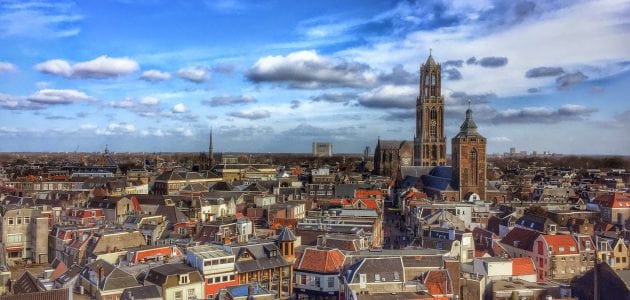Utrecht in English
“And the further he went, the longer his way back.” That’s a quote by C.C.S. Crone, one of Utrecht’s literary masters, about the attractive force of the city. Once you’ve been to this UNESCO City of Literature, you want to keep coming back.
Picture this: a city located in the center of Holland with a history that dates back to almost two millennia ago. A big city maintaining the small town vibe, nowadays known to be the fourth happiest place in the world. This is Utrecht. A city with the most beautiful canals, frequented by 340,000 inhabitants coming from 159 nationalities. A city of alluring squares and alley-ways, furnished with authentic cafés, coffee houses, wine bars and grandiose eye-catching monuments. Beautiful, right? A quintessentially Dutch city, like how it appears on travel guides. But let’s keep exploring because Utrecht is the city of unexpected treasures. It will surprise you both as visitor and resident.
A Roman settlement lays the foundations for Utrecht. The river Rhine plots countless blue-green veins stretching across the city. However, it is not only the meandering waterways that have been giving vitality to the city but also the literature that, in Utrecht, grows under your feet as you walk. Literary texts appear before your eyes in every corner: on building façades, plaques, memorial stones and street lighting. Every Saturday, a stonemason hews a letter of a never-ending poem called the ‘Letters of Utrecht’ into cobblestones lining the street, extended by a different poet of Utrecht’s guild of poets. Words are formed about over months; sentences are formed over years.
Utrecht is home to hundreds of writers, poets, and journalists. The city, has an extensive network of bookshops and libraries, the largest academic faculty of Humanities and the headquarters of the largest publishing house in the Netherlands. Virginia Woolf visited the city in the 1930s and was struck by the wealth of books on offer: “A huge range of bookshops, with just as many English, French and German books as Dutch ones.” Still, Utrecht’s literary character is reflected, above all, in a large number of literary events that are omnipresent in the city: literary evenings organized in everywhere, even in dance halls and pubs, street poetry walks and literary masters coming alive in literary theatre Salon Saffier. Throughout the year, big and small literary events take place every day. Het Literatuurhuis (The House of Literature) is Utrecht’s main literary events organization. The current Utrecht UNESCO City of Literature bureau is also part of the House of Literature: a characteristic canal house on the Oudegracht (Old Canal) that provides space for the office and also includes a small theatre, where literary activities are held each week. Yearly in September the House organizes the International Literature Festival Utrecht (ILFU). This is the festival where Nick Cave, Michel Houellebecq, Paul Auster and PJ Harvey joined the stage with hundreds of international writers, poets, translators, artists and musicians. The Dutch Poetry Night, the biggest poetry event in the Netherlands, is part of the ILFU Festival. Organized annually since 1980 in the TivoliVredenburg concert hall, it has become an icon of literary performing arts. The event lasts around eight hours and sees performances by 20 poets, alternated with musical intermezzos, in front of an audience of around 2000 people.
The city has always been a literary frontrunner. Its literary icons from the past include the Utrecht Psalter (830 AD), the most famous medieval manuscript in the Netherlands (included in UNESCO’s World Heritage List) and the first printed book of the Northern Netherlands (1473 AD). The city’s favourable literary climate attracted writers and thinkers like Descartes, Locke and Hegel to the city and as early as the 16th century, female writers were part of the intellectual circuits. It is a wonderful phenomenon that today this monumental city is one of the youngest cities too: 70% of its 340,000 inhabitants are under the age of 45! A wide range of schools and universities ensures a permanent influx of young people. This means that a youthful, enterprising spirit haunts its ancient city center. “Utrecht, City where you learn to read” is the motto of our City of Literature and it’s not by chance that Miffy is our literary mascot: 85 million copies of the Miffy books by Utrecht’s world-famous author and artist Dick Bruna have been sold, teaching millions of children how to read.
With a new generation of writers and poets, the numerous bookshops and publishers, the many literary events and its 1300 years of literary history the city is a haven for Dutch literature and has been for years. As UNESCO City of Literature, Utrecht aspires to be an international literary ‘hub’; a place where you can learn to read, meet writers and discover new books from all corners of the world.

